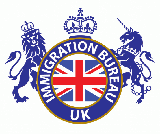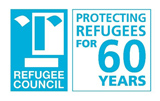Country Profiles
AUSTRALIA | CANADA | NEW ZEALAND | UNITED KINGDOM | UNITED STATES
AUSTRALIA
 
|
REFUGEE DETERMINATION Australia’s Department of Immigration and Border Protection handles asylum claims in the country. In 2011, the Protection Obligations Determination process replaced the existing Refugee Status Determination process used for irregular maritime arrivals, in response to the High Court’s 2010 decision that all irregular maritime arrivals are able to seek judicial review of a negative assessment of their claims for refugee status. RESETTLEMENT The offshore resettlement component comprises two categories of permanent visas: ASYLUM PROCESSES ‘NO WAY’ government campaign posters. DETENTION PRACTICES Further updated Government statistics on immigration detention available here. The Refugee Council of Australia (RCOA) is the national umbrella body for refugees and the organisations and individuals who support them. It has more than 200 organisational and 900 individual members. NATIONAL LEGISLATION ON REFUGEES AND ASYLUM-SEEKERS |
CANADA
|
REFUGEE DETERMINATION Refugee claims are referred to the Immigration and Refugee Board (IRB), an independent administrative tribunal. In December 2012, Canada’s refugee determination system underwent important changes, where claimants must now comply with faster timelines for providing basic information and for appearing at the hearing on their claim. Generally, claimants have 15 days to complete the Basis of Claim (BOC) form and, for regular claimants, the hearing is scheduled within 60 days of making the claim (more information here). The designated countries of origin (DCOs) list also came into effect in 2012, noting 35 countries that Canada has deemed to be safe countries for refugees and claimants from these countries are subjected to expedited refugee hearing processes. RESETTLEMENT ASYLUM PROCESSES DETENTION PRACTICES The Canadian Council for Refugees (CCR) is the national non-profit umbrella organization committed to the rights and protection of refugees and other vulnerable migrants in Canada and around the world and to the settlement of refugees and immigrants in Canada. NATIONAL LEGISLATION ON REFUGEES AND ASYLUM-SEEKERS |
NEW ZEALAND
  |
REFUGEE DETERMINATION The Immigration New Zealand office that decides claims to refugee status and to protection is the Refugee Status Branch. According to statistics from Immigration New Zealand, it generally takes 3-5 months for a refugee claim to be processed and for a decision to be made. RESETTLEMENT ASYLUM APPLICANTS DETENTION PRACTICES Refugee Council of New Zealand is the national umbrella organization liaising with member organizations and the Government of New Zealand to provide advice, information and assistance to asylum-seekers and refugees and to ensure that all aspects of New Zealand’s asylum and refugee policy and practice respect international law and the human rights of asylum-seekers and refugees. NATIONAL LEGISLATION ON REFUGEES AND ASYLUM-SEEKERS |
UNITED KINGDOM
  |
REFUGEE DETERMINATION RESETTLEMENT ASYLUM PROCESSES DETENTION PRACTICES The Refugee Council UK also provide briefings to parliamentarians on the issues affecting refugee and asylum seekers. NATIONAL LEGISLATION ON REFUGEES AND ASYLUM-SEEKERS |
<
UNITED STATES
 |
REFUGEE DETERMINATION You must receive a referral to the U.S. Refugee Admissions Program (USRAP) for consideration as a refugee. Eligibility for refugee status is determined on a case-by-case basis through an interview with the Department of Homeland Security’s U.S. Citizenship and Immigration Services (USCIS). RESETTLEMENT There are 9 U.S. Refugee Resettlement Agencies help newly arrived refugees settle into local communities. These organizations include: Church World Service, Ethiopian Community Development Council, Episcopal Migration Ministries, Hebrew Immigrant Aid Society, International Rescue Committee, Lutheran Immigration and Refugee Service, U.S. Committee for Refugees and Immigrants, United States Conference of Catholic Bishops’ Migration and Refugee Services, and World Relief. ASYLUM PROCESSES DETENTION PRACTICES Refugee Council USA (RCUSA) is a coalition of U.S. non-governmental organizations focused on refugee protection. This visual may also be helpful in understanding the refugee and asylum-seeking processes in the U.S. NATIONAL LEGISLATION ON REFUGEES AND ASYLUM-SEEKERS |
<